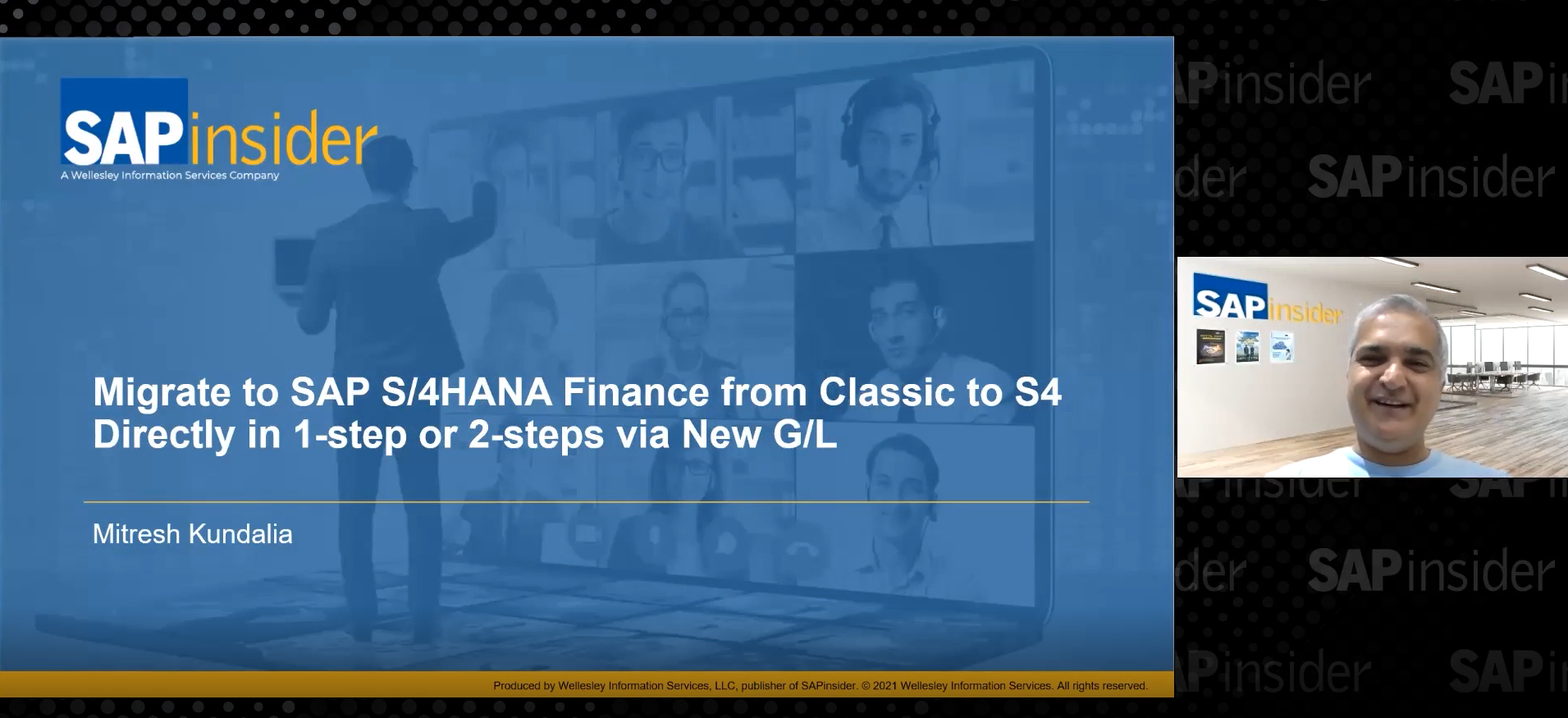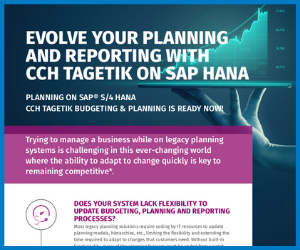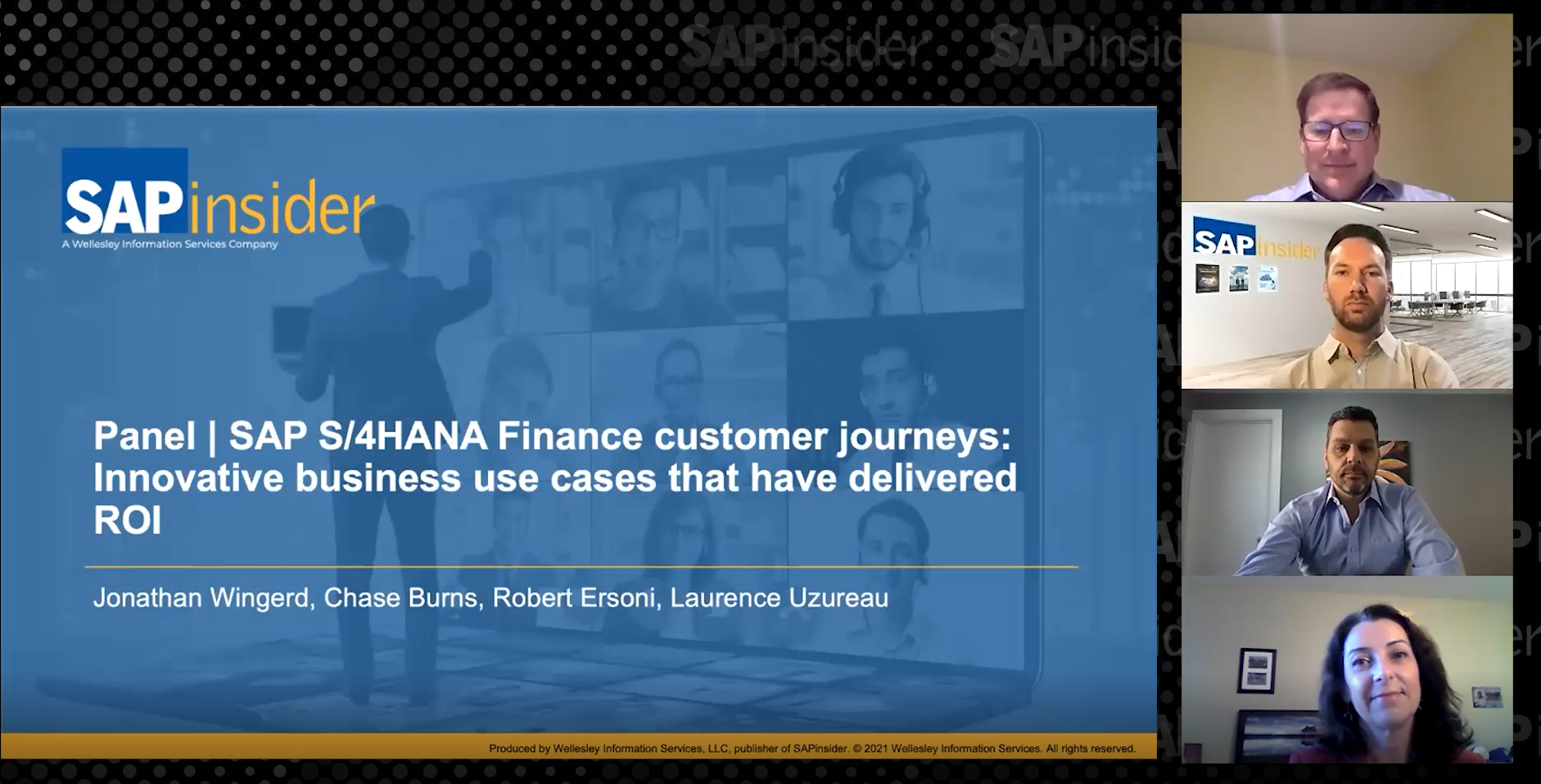Finance Is Leading the Way to Digital Change with SAP S/4HANA
Evolving expectations from business users for how they interact with financial software should be familiar to anyone who uses apps on a smartphone. It’s not enough for the technology to merely be in place: Employees want to access real-time information instantaneously using an intuitive interface that is easily configurable to a user’s preferences.
This is the mindset in finance departments the world over; analysts and controllers have no desire to take a step back in technology when they walk into the office. Along with new technology comes the realization that efficiency gains can be had by reimagining many entrenched processes that had been supported by past-prime solutions. Like someone who uses a device for all banking transactions ruminating on the need for a teller, a financial analyst presented with a single source of truth will readily question the need to track down spreadsheet printouts.
The digitization wave, in other words, spares no business function or industry. Everyone caught in its wake is primed to think about new ways of doing business and is willing to upend long-standing business processes that stand in the way of digital progress.
This progress can be measured in many ways. It could be a discrete manufacturer producing a customized product without adding expense. It could be a retailer responding in real time to individual buying preferences. It could be a supply chain planner receiving advanced warning of material shortages based on inputs from internal and external data sources.
For finance departments, too, progress is no longer measured by incremental gains. When analysts have real-time access to a single source of truth, they can make insightful, data-driven planning and budgeting decisions based not on historical, year-over-year trends but on what happens in the business that very day — and what is predicted to happen in the future.
This is not a hypothetical view. Rather, it is the accepted vision across the business landscape, shaped by a collective mindset that simplicity in how we go about daily tasks is an easily reachable byproduct of enabling technology. Contrast this mindset with the transition toward shared financial services, which gained popularity about a decade ago as a then-novel approach to reduce cost and consolidate resources. The idea wasn’t to change processes, per se, but to attain a level of process harmonization and run existing processes inexpensively. By now, this approach has for all intents and purposes outlived its usefulness; companies that have gone down this path have realized all the savings coming their way. There are no more stones to uncover in the search for incremental gains.
Digital automation is the logical successor as the most sustainable way to achieve long-term cost savings, and the contrast with shared services is a good indication of how truly groundbreaking it can be. Because unlike shared services and other step gains, digitization takes process harmonization to a new level by changing the very idea of what’s possible.
Jumping on the Bandwagon
Companies that have accepted this premise and rightly see digitization as a generational change have little interest in waiting to move to a new technology platform to make this happen. This helps account for the healthy adoption of SAP S/4HANA as a next-generation, real-time, predictive technology platform that enables a complete, digital business transformation. And because this next-generation platform made its debut with SAP S/4HANA Finance, it is no surprise that the finance side is blazing the adoption trail with live customers numbering in the hundreds and with thousands more in various phases of implementation.
As SAP S/4HANA matures — October 31, 2016, marked the SAP S/4HANA 1610 release — customers are exploring innovation not just to core finance, but adjacent innovations that include leveraging Central Finance as an SAP S/4HANA deployment option. Central Finance allows complex environments to partially consolidate various system environments onto the SAP S/4HANA platform without having to undertake a costly, time-consuming system consolidation to reduce time to value.
Functionality such as Central Finance helps to explain the upward tick in adoption for SAP S/4HANA. Companies in all industries are looking for end-to-end transparency without the need for manual data reconciliation. This is why the universal journal in the second release of SAP S/4HANA was so well received. Together with the data view mechanism of SAP HANA, it forms the basis of SAP’s single source of truth architecture for finance.
The SAP S/4HANA 1610 release continues with the concept of delivering value-added functionality to help companies accelerate digital transformation. This includes new capabilities for transfer pricing that were not available in the previous release. These capabilities allow cost transparency along the entire value chain without artificial intracompany profits that are the result of international tax regulation.
Spurring Innovation
Yes, new functionality is important to help companies solve vexing business challenges, but the real story to tell is that for all its bells and whistles, the value of a new technology platform should more aptly be judged by how well it serves as a springboard for innovation in the digital age.
Here, SAP S/4HANA proves its mettle with a hybrid cloud model that facilitates edge innovation. With a recognition that not everything has to be implemented as enhancements in the core, SAP makes it easy for companies to integrate the core with application extensions deployed on SAP HANA Cloud Platform without the need for data replication. Applications can connect, in real time, to core finance in SAP S/4HANA either on premise, in SAP HANA Enterprise Cloud, or in the public cloud. With SAP HANA under the hood facilitating the data exchange and calculations, end users only need to concern themselves with the fact that they’re working with a single source of truth.
This is a significant conceptual change that drives home the importance of time to value in a journey to true innovation; unlike best-in-breed, software-as-a-service (SaaS) cloud applications, SAP HANA Cloud Platform application extensions limit or eliminate integration challenges and data silos because there is no data replication.
No Time Like the Present
The capacity for edge innovation has helped allay some customer concern that the road to digital transformation is filled with pitfalls, and that a migration to SAP S/4HANA must necessitate business disruption, or that achieving the enormity of benefits attendant with such a transformation translates to cost overruns. Even if a company is not immediately transitioning to a real-time finance organization, the new architecture of the SAP S/4HANA platform will deliver gains immediately. Now, while it’s true that a pure technical upgrade will result only in limited gains, such an upgrade will provide the organization with the autonomy to roll out future change incrementally and strategically in line with business goals. This could mean providing baseline predictive analytics for the CFO, as an example, with a real-time profit and loss (P&L) statement. There are, in other words, easy wins that can be had without having to make an organizational sea change.
A digital enterprise is an agile enterprise, and SAP S/4HANA as a platform must in turn be agile. Future enhancements will be made to SAP S/4HANA that will make it even easier for finance organizations to accelerate their digital journeys, such as the capability to perform real-time consolidations directly on top of live SAP S/4HANA data on the same data model.
Momentum for a next-generation digital platform is building, and the vast number of implementation partners in the finance space, and the many that are developing the aforementioned application extensions, are validation of this claim. The digitization wave will float all boats, to use a phrase, but only those in the water will be carried on a transformation journey.








